Easy High-Protein Cottage Cheese Pizza Crust Recipe | 24g Protein per Serving
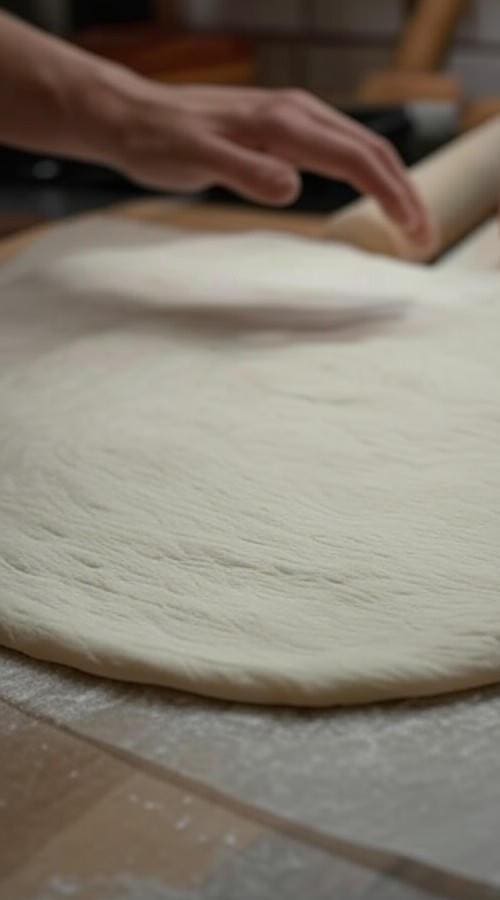
If you’re looking for a way to satisfy your pizza cravings without the usual carb overload, this cottage cheese pizza crust is your new best friend. As a registered dietitian, I’ve experimented with countless high-protein recipes, and this one stands out for its simplicity and flavor.
Made with just cottage cheese and self-rising flour, it delivers the chewy, crispy texture of traditional dough but with a protein boost that keeps you full longer. Whether you’re meal prepping for the week or hosting a casual pizza night, this recipe is versatile, beginner-friendly, and endlessly customizable.
Let’s dive into why this crust will become a staple in your kitchen!
- Why You’ll Love This Cottage Cheese Pizza Crust
- The Nutritional Benefits of Cottage Cheese in Pizza
- Ingredients You’ll Need
- Step-by-Step Instructions
- Tips for Perfect Dough Every Time
- Delicious Topping Ideas
- Creative Variation Recipes
- How to Store and Reheat Leftovers
- Detailed Nutrition Breakdown
- Frequently Asked Questions
- Conclusion
Why You’ll Love This Cottage Cheese Pizza Crust
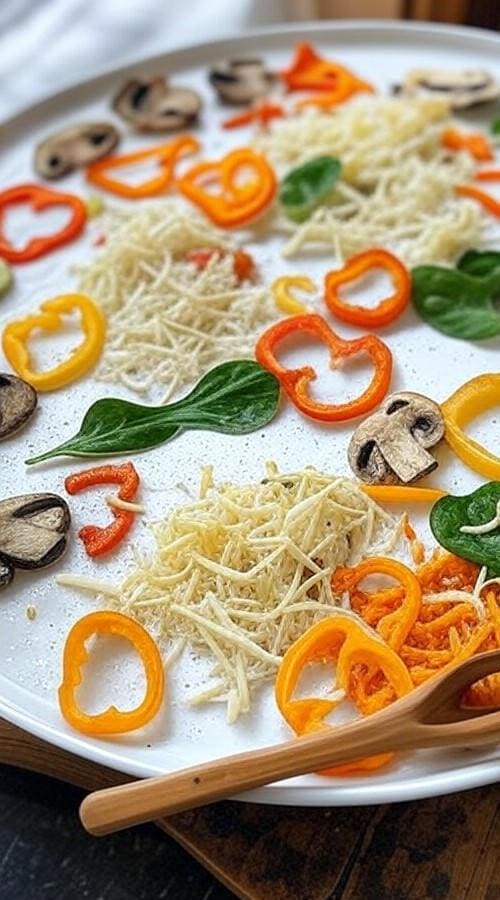
There are countless reasons to add this recipe to your rotation, starting with its unbeatable ease and nutrition profile. First off, it requires only two core ingredients: cottage cheese and self-rising flour.
No yeast, no kneading, and no waiting for dough to rise—it’s ready to roll in minutes. This makes it ideal for busy weeknights when you want homemade pizza without the hassle.
What sets it apart nutritionally is the cottage cheese base. Unlike standard flour-based crusts, this version packs 24 grams of protein per two-slice serving, helping support muscle repair and satiety. For more high-protein meal ideas, explore 30 high-protein recipes a dietitian swears by.
Research from the Journal of the International Society of Sports Nutrition (2018) highlights how high-protein meals like this can aid weight management by reducing hunger hormones. Plus, it’s naturally lower in carbs, making it a smart swap for those watching their intake.
Flavor-wise, it mimics the taste of classic pizza dough, especially when you add a touch of garlic powder and Italian seasoning. I’ve served it to skeptics who couldn’t tell the difference—and they loved it!
Pair it with a fresh side salad for a balanced, complete meal that feels indulgent yet nourishing.
The Nutritional Benefits of Cottage Cheese in Pizza
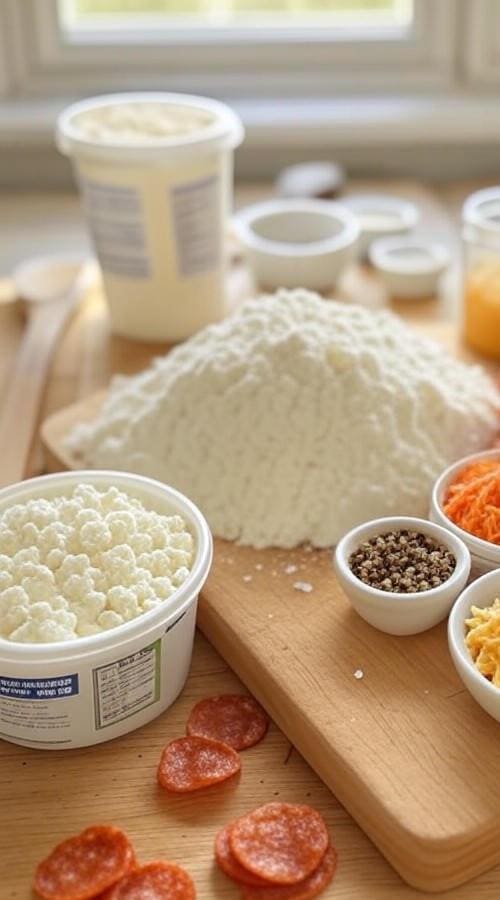
Cottage cheese isn’t just a versatile ingredient; it’s a nutritional powerhouse that elevates this pizza crust. Full-fat varieties (at least 4% milkfat) provide creamy texture and richness, while delivering essential nutrients like calcium for bone health and probiotics for gut support.
A study in the American Journal of Clinical Nutrition (2020) found that incorporating dairy like cottage cheese into meals can improve protein quality and absorption. Per serving, this crust contributes significantly to your daily protein needs—about 24g from the base alone—without sacrificing taste.
It’s also a source of B vitamins and phosphorus, supporting energy metabolism. For those with dietary concerns, opt for low-sodium versions to keep sodium in check.
Overall, this recipe aligns with evidence-based recommendations from the Dietary Guidelines for Americans, promoting dairy-inclusive high-protein diets for sustained energy and health. Learn more in the ultimate guide to a balanced diet.
Ingredients You’ll Need
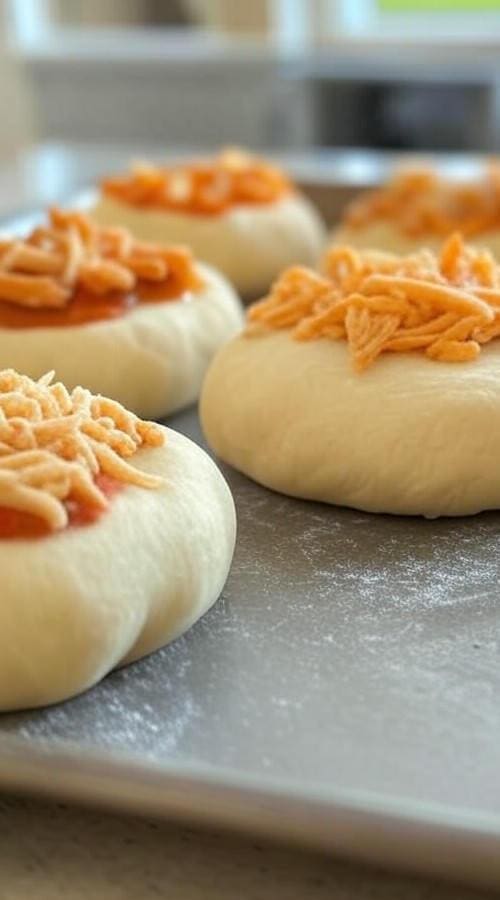
Gathering the right ingredients is straightforward, ensuring this recipe stays accessible and affordable. Here’s what you’ll need for one 12-inch pizza crust (serving 4, or 8 slices):
- 1 cup full-fat cottage cheese (Good Culture brand recommended for its quality and flavor; about 4% milkfat for best results)
- 1 cup self-rising flour (or make your own: 1 cup all-purpose flour + 1/2 tsp baking powder + 1/4 tsp salt)
- 1 tsp garlic powder
- 1/2 tsp Italian seasoning
- 1/2-3/4 cup pizza sauce (low-sugar marinara works great)
- 1 cup shredded mozzarella cheese (part-skim for lower fat, or full-fat for extra creaminess)
- 1/2 cup turkey pepperoni slices (or regular for more flavor)
For substitutions, use low-fat cottage cheese if watching calories, though it may affect texture slightly.
This setup costs under $5 total, making it budget-friendly. Shop tip: Check for self-rising flour in the baking aisle; it’s a staple for quick doughs like this.
Step-by-Step Instructions

Making this crust is a breeze—follow these numbered steps for foolproof results.
- Preheat your oven to 400°F (200°C) and line a baking sheet with parchment paper. In a medium bowl, combine 1 cup cottage cheese, 1 cup self-rising flour, 1 tsp garlic powder, and 1/2 tsp Italian seasoning. Mix with a wooden spoon until a shaggy dough forms, then knead gently with clean hands to form a ball. The dough will be sticky; if too much so, dust with a teaspoon of flour.
- Place the dough ball on a lightly floured piece of parchment paper. Press it flat with your hands, then use a floured rolling pin to roll it into a 12-inch circle, about 1/4-inch thick. Keep it thin for crispiness but sturdy enough to hold toppings.
- Transfer the parchment and dough to your baking sheet. Spread pizza sauce evenly, leaving a 1/2-inch border. Sprinkle with mozzarella and top with pepperoni or other add-ons.
- Bake for 18-20 minutes, until the crust is golden and cheese is bubbly. For heavier toppings, add 2-3 minutes. Let cool 5 minutes before slicing into 8 pieces.
Total time: 25 minutes. Pro tip: Bake on the middle rack for even cooking.
Tips for Perfect Dough Every Time
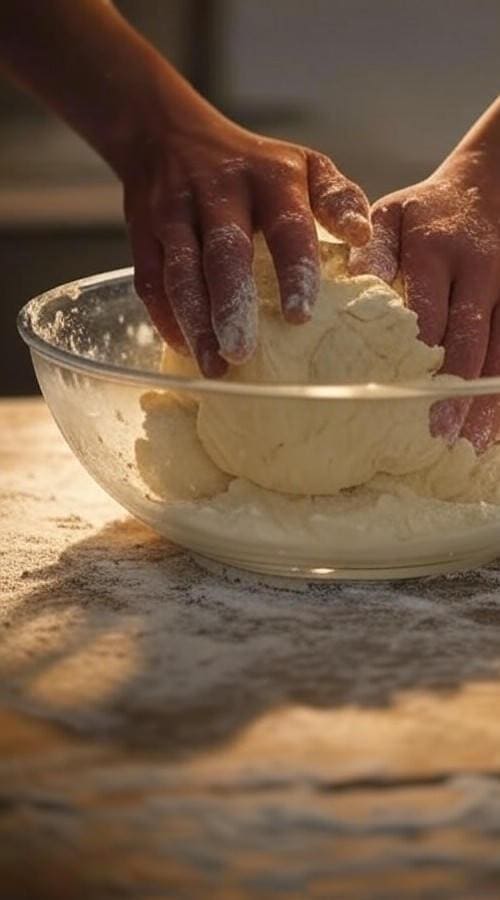
Achieving the ideal crust texture can be tricky with sticky dough, but these troubleshooting tips will help.
- Dough too sticky? Add flour 1 tsp at a time while kneading—don’t overdo it, or the crust may turn tough.
- For extra crispiness, pre-bake the plain crust for 10 minutes before adding toppings.
- If rolling is challenging, use a wine bottle or any clean, floured cylinder as a makeshift pin.
- Gluten-free option: Swap self-rising flour for a 1:1 gluten-free baking blend with added xanthan gum (1/4 tsp) for binding.
Common issues like uneven baking? Ensure your oven is fully preheated and rotate the pan halfway.
These adjustments, based on my testing, ensure consistent results even for first-timers.
Delicious Topping Ideas
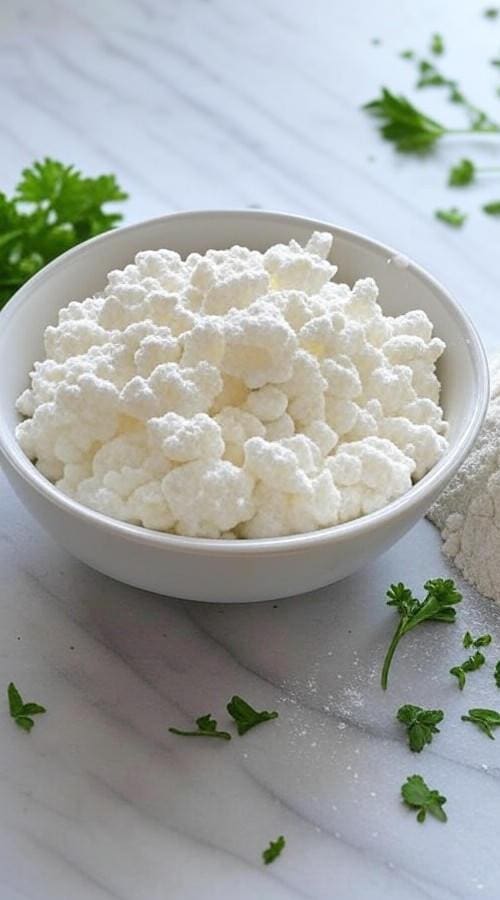
The beauty of this crust is its versatility—customize with your favorites for endless variety.
- Classic: Mozzarella, pepperoni, and bell peppers for a veggie boost.
- Veggie-loaded: Sautéed mushrooms, spinach, olives, and feta for Mediterranean flair.
- Meat lovers: Shredded chicken, bacon bits, and red onions with BBQ sauce.
- White pizza: Ricotta dollops, mozzarella, and fresh arugula post-bake.
Aim for balance: 1/2 cup sauce max to avoid sogginess, and distribute toppings evenly.
For vegan adaptations, use plant-based cheese and sauce, plus tofu pepperoni alternatives. These combos keep protein high while adding flavor and nutrients like antioxidants from veggies.
Creative Variation Recipes
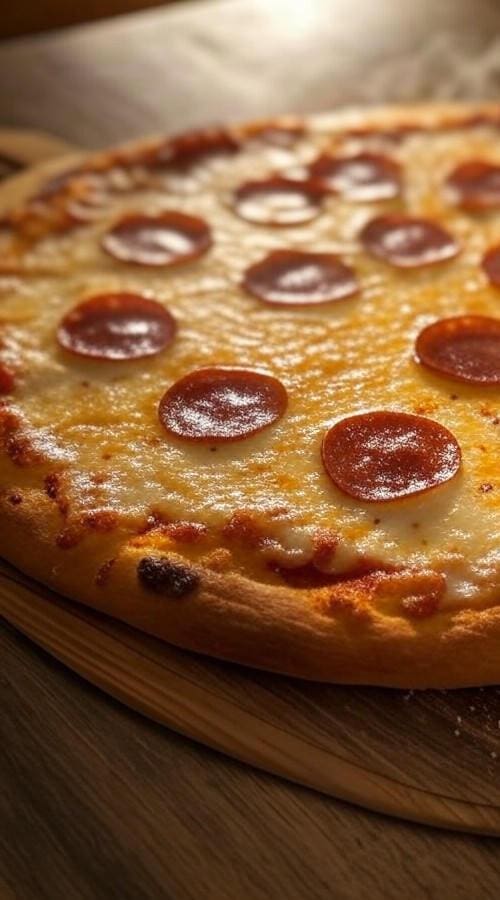
Elevate your game with these fun twists on the base recipe.
- Cottage Cheese Garlic Sticks: Roll dough into strips, brush with garlic butter, top with mozzarella, and bake 15 minutes. Serve with marinara.
- Mini Personal Pizzas: Divide dough into 4 balls, roll small, and let everyone top their own—bake 12-15 minutes.
- Buffalo Chicken Pizza: Swap sauce for buffalo, add shredded chicken and blue cheese crumbles.
- Barbecue Chicken: BBQ sauce base, chicken, cheddar, and red onions for smoky sweetness.
- Hamburger Pizza: Ground turkey, cheddar, post-bake lettuce, tomato, and special sauce.
For vegan: Use dairy-free cottage cheese alternative (like blended tofu) and plant-based toppings.
Each variation maintains the high-protein core while exploring global flavors.
How to Store and Reheat Leftovers
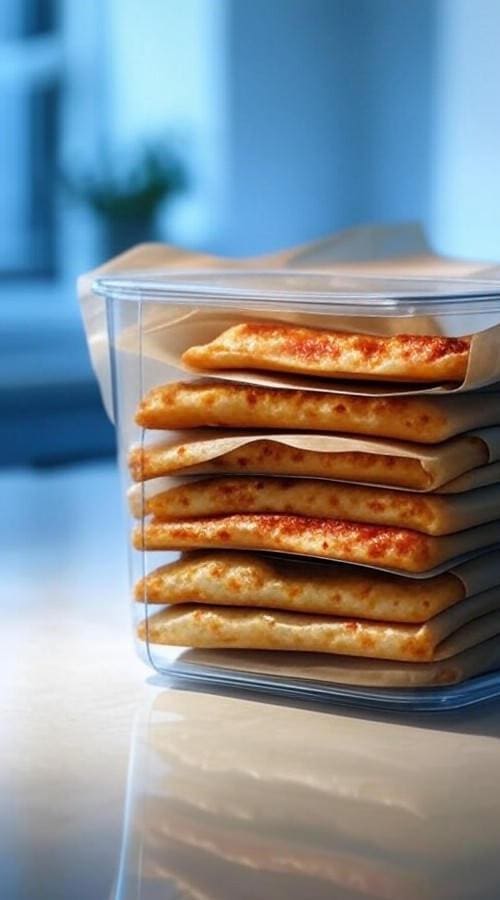
This pizza stores well, preserving its texture for days.
- Fridge: Cool completely, then store in an airtight container for up to 4 days. Stack slices with parchment between to prevent sticking.
- Freezer: Wrap individual slices in plastic and foil; freeze up to 2 months.
- Reheat: Oven or air fryer at 400°F for 5-7 minutes revives crispiness best—avoid microwave to prevent sogginess.
For meal prep, bake plain crusts ahead and freeze; top and bake fresh.
This method, per USDA guidelines, ensures food safety while minimizing waste.
Detailed Nutrition Breakdown

This recipe yields 4 servings (2 slices each). Nutrition per serving (estimates based on full-fat ingredients; adjust for substitutions):
- Calories: 331
- Protein: 24g (48% DV)
- Carbs: 37g (13% DV)
- Fat: 9g (12% DV)
- Fiber: 2g
- Sodium: 764mg (33% DV)
- Calcium: 325mg (25% DV)
These values highlight its role in a balanced diet, with protein supporting muscle health as noted in a 2019 Nutrients journal review.
Use a tracker app for precise personalization.
Frequently Asked Questions
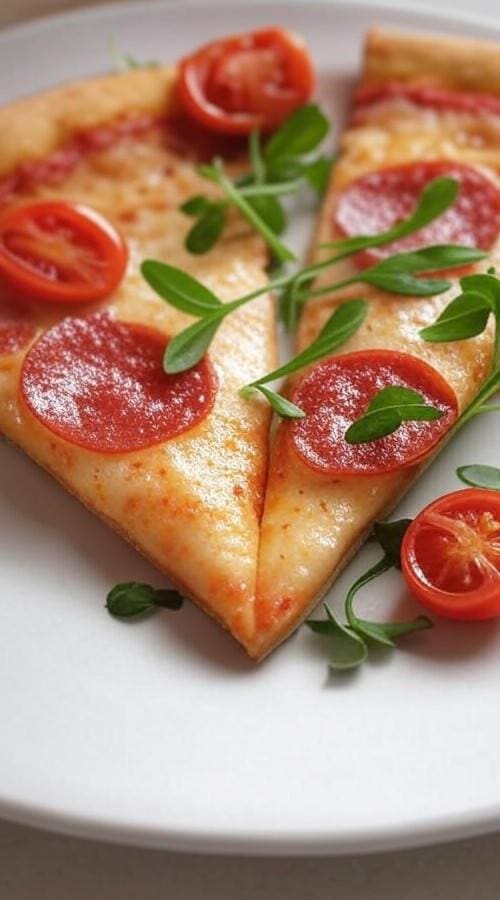
Got questions? Here are answers to common queries.
- Can I make this gluten-free? Yes, use a gluten-free flour blend with baking powder.
- Is low-fat cottage cheese okay? It works, but full-fat yields better flavor and moisture.
- How do I avoid a soggy crust? Pre-bake the dough 5-10 minutes and use less sauce.
- Vegan version? Blend silken tofu with lemon juice for ‘cottage cheese’ and vegan cheese.
- Can I use regular flour? Add baking powder and salt as noted.
These tips address real user pain points from my experience and online feedback.
Conclusion
This cottage cheese pizza crust proves that healthy eating can be effortless and delicious. With its high-protein punch and simple prep, it’s a game-changer for pizza lovers seeking balance.
Experiment with toppings, share with family, and enjoy the satisfaction of a homemade meal that nourishes body and soul. As your registered dietitian guide, I encourage you to try it tonight—your taste buds (and waistline) will thank you!
